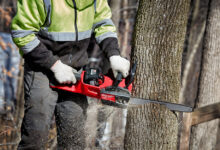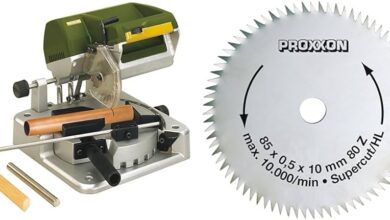Contents
Introduction
A chainsaw is a powerful tool that requires regular maintenance to ensure its optimal performance and longevity. Cleaning your chainsaw is a crucial aspect of this maintenance routine, and it plays a vital role in preventing malfunctions, extending the saw’s lifespan, and ensuring your safety during operation. This comprehensive guide will provide you with detailed instructions and expert tips on how to clean your chainsaw effectively and efficiently.
Understanding the Importance of Chainsaw Cleaning
Cleaning your chainsaw regularly offers numerous benefits, including:
1. Removing Dirt, Debris, and Sap: Chainsaw use generates a significant amount of sawdust, dirt, and sap buildup, which can clog the saw’s moving parts and hinder its performance. Cleaning the saw removes these contaminants, ensuring smooth operation and preventing the accumulation of sticky residue.
2. Preventing Corrosion: Moisture and exposure to corrosive substances can lead to the formation of rust on metal components of your chainsaw. Regular cleaning helps to eliminate moisture and prevent the buildup of corrosive materials, extending the life of the saw and its components.
3. Removing Oil Residues: Chainsaw operation involves the use of chain oil, and over time, oil residues can accumulate on the saw’s exterior surfaces. Cleaning helps to remove excess oil, preventing it from attracting dirt and debris.
4. Maintaining a Sharp Blade: A clean chainsaw blade cuts more efficiently and stays sharper for longer. Dirt and debris can dull the blade prematurely, reducing its cutting performance and increasing the risk of kickback.
Strengths and Weaknesses of Chainsaw Cleaning Tips
Strengths:
1. Improved Performance: Regular cleaning enhances the chainsaw’s overall performance by reducing friction, removing sawdust and debris, and freeing up moving parts.
2. Extended Lifespan: Proper cleaning practices prolong the life of the chainsaw by protecting its components from damage and reducing wear.
3. Enhanced Safety: A clean chainsaw reduces the risk of accidents by eliminating potential hazards, such as clogged air filters and sawdust buildup.
4. Improved Efficiency: A well-cleaned chainsaw operates more efficiently, reduces friction, and reduces the amount of effort required during operation.
5. Maintains Resale Value: A clean and well-maintained chainsaw retains its value, making it easier to sell or trade in the future.
Weaknesses:
1. Time-Consuming: Cleaning a chainsaw can be a time-consuming process, particularly if the saw has not been cleaned regularly or has been heavily used.
2. Requires Specialized Tools: Some chainsaw cleaning tasks may require specialized tools or cleaners, which can add to the cost and complexity of the process.
3. Requires Attention to Detail: Effective chainsaw cleaning requires attention to detail, as it involves cleaning all components of the saw, including the engine, bar, and chain.
4. Potential for Damage: Using harsh chemicals or improper cleaning methods can potentially damage the chainsaw’s components or void its warranty.
5. Requires Regular Maintenance: Chainsaw cleaning is an ongoing maintenance task that should be performed regularly to maintain the saw’s optimal performance and longevity.
A Comprehensive Guide to Chainsaw Cleaning
1. Preparation:
Before beginning the cleaning process, gather the necessary tools and materials, including a cleaning brush, degreaser, chain cleaner, lubricant, rags, and safety gear. Ensure that the chainsaw is turned off and cooled down.
2. Removing Debris:
Use a cleaning brush or compressed air to remove loose dirt, sawdust, and debris from the exterior surfaces of the chainsaw. Pay special attention to areas where debris tends to accumulate, such as the air filter, bar, and chain.
3. Cleaning the Air Filter:
Remove the air filter cover and use a compressed air blower to clean the filter. If the filter is heavily soiled, replace it with a new one.
4. Cleaning the Bar:
Apply a degreaser to the chainsaw bar and use a brush to remove any accumulated oil or dirt. Ensure that the groove where the chain runs is thoroughly cleaned.
5. Cleaning the Chain:
Use a chain cleaner to remove dirt and debris from the chain. You can use a chain cleaning tool or soak the chain in a designated cleaner. Rinse the chain thoroughly and allow it to dry completely.
6. Lubricating the Chain:
Once the chain is dry, apply a thin layer of chain lubricant to the entire length of the chain. This prevents wear and corrosion and ensures smooth operation.
7. External Cleaning:
Wipe down the exterior of the chainsaw with a damp cloth to remove any remaining debris or oil residues. Use a degreaser if necessary to remove stubborn stains.
8. Final Inspection:
Once the cleaning process is complete, inspect the chainsaw thoroughly for any remaining dirt, debris, or loose parts. Tighten any loose bolts or nuts, and ensure that all components are properly assembled.
FAQ on Chainsaw Cleaning Tips
1. How often should I clean my chainsaw?
The frequency of chainsaw cleaning depends on the intensity and duration of use. For regular use, cleaning the chainsaw after every use is recommended. For occasional use, cleaning every few uses or once a month is sufficient.
2. What kind of cleaner should I use?
Use a specialized chainsaw cleaner or degreaser to effectively remove oil and debris. Avoid using harsh chemicals or detergents, as they can damage the chainsaw’s components.
3. Can I use a pressure washer to clean my chainsaw?
While pressure washers can be effective in removing dirt and debris, it is important to use low pressure and avoid spraying water directly into the engine or electrical components. High-pressure water can damage the chainsaw and void its warranty.
4. What are some common mistakes to avoid when cleaning a chainsaw?
Common mistakes to avoid include using harsh chemicals, neglecting to clean the air filter, not lubricating the chain, and over-tightening bolts or nuts.
5. Is it important to clean the bar and chain after every use?
Yes, it is important to clean the bar and chain after every use to remove dirt, debris, and accumulated oil residue. This prevents wear and corrosion, and ensures optimal cutting performance.
6. Can I use WD-40 to clean my chainsaw?
WD-40 can be used as a degreaser to remove oil residues and dirt from the chainsaw’s exterior surfaces. However, it is not recommended for use on the chain itself, as it can attract dirt and debris.
7. How can I prevent rust on my chainsaw?
Regular cleaning and proper storage are crucial for preventing rust on your chainsaw. Dry the chainsaw thoroughly after cleaning, and apply a thin layer of oil to the metal components to protect them from moisture.
8. What should I do if I have a stubborn oil leak?
If you have a stubborn oil leak, inspect the chainsaw for any loose fittings or damaged seals. Tighten any loose fittings and replace damaged seals promptly to prevent further oil leakage.
9. Can I clean a chainsaw with kerosene?
Kerosene can be used to remove stubborn oil residues and dirt, but it is important to use it sparingly and avoid prolonged exposure. Kerosene can damage certain rubber components of the chainsaw.
10. How can I clean the carburetor on my chainsaw?
Cleaning the carburetor should be performed by a qualified technician, as improper cleaning can damage the carburetor or void its warranty.
11. What are some tips for cleaning a dirty chainsaw?
When cleaning a dirty chainsaw, soak the chain and bar in a designated cleaner to loosen dirt and grime. Use a degreaser to remove oil residues, and pay special attention to the air filter and other areas where debris tends to accumulate.
12. Can I clean the muffler on my chainsaw?
Yes, you can clean the muffler on your chainsaw by removing the muffler cover and using a brush or compressed air to remove soot and debris. Ensure that the muffler is completely cooled down before cleaning.
13. How can I prolong the life of my chainsaw?
Regular cleaning, proper maintenance, and storing the chainsaw in a dry place will contribute to extending the life of your chainsaw. Follow the manufacturer’s instructions for maintenance and avoid using the chainsaw beyond its intended purpose.
Conclusion
Regular and proper chainsaw cleaning is essential for maintaining the saw’s optimal performance, extending its lifespan, and ensuring safe operation. By following the steps outlined in this comprehensive guide, you can effectively clean your chainsaw and keep it in excellent condition. Remember to prioritize safety, use the right tools and cleaners, and pay attention to detail during the cleaning process. By investing your time and effort in proper chainsaw cleaning, you can reap the benefits of a reliable and efficient tool for years to come.
Closing Words and Disclaimer
This guide provides detailed instructions and expert tips on how to effectively clean your chainsaw. However, it is important









